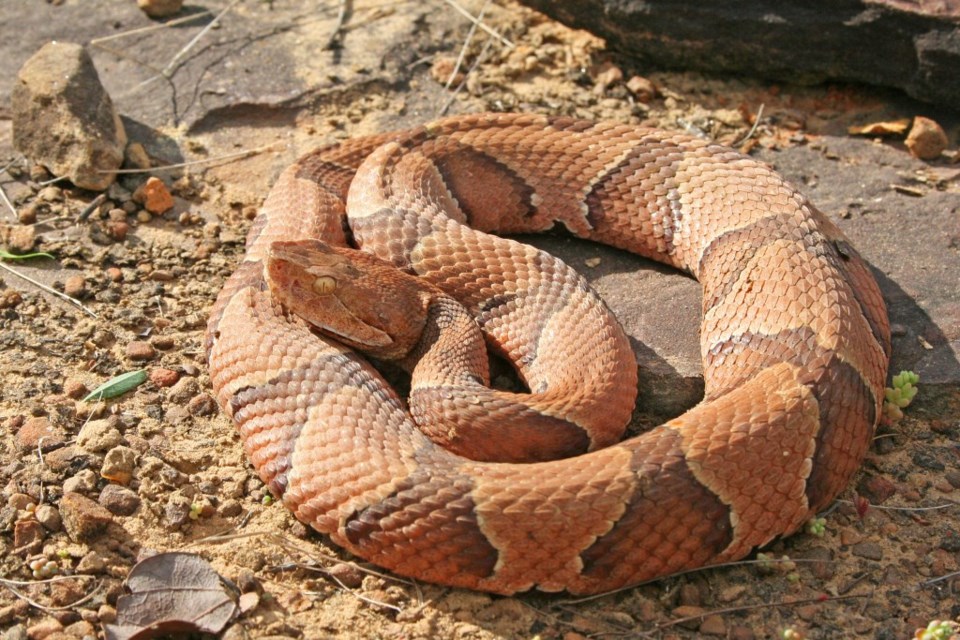With the summer heat in a full swing, the best times to exercise are the cooler hours of the day like dusk and dawn. This is also true for the local critters. Here’s all you need to know if you are joined by a snake in your morning stroll.
North Texas is home to 30 species of snakes of which only four are venomous: the cottonmouth or water moccasin, most commonly found near calm bodies of water, the copperhead, venomous but common, and the more rare coral and rattlesnakes. The kind of snakes that most likely will slither into your backyard is harmless like the Texas rat snake, or if you are doing yard work a cold-blooded critter might pop up. Because these reptiles fulfill an important role in the ecosystem it’s better to know the difference between the harmless and the dangerous kinds.

But if you come across a snake you can’t identify, it’s best to follow some standard precautions. “The most dangerous thing a person can do is attempt to kill or handle the snake,” said Greg Pendalis, curator of the Amphibian and Reptile Diversity Research Center at The University of Texas at Arlington, via Texas Standard. “If you see a snake while hiking or in nature, the best thing to do is to give it space and allow it to continue moving along the trail.”
If you find a snake in your backyard near pets or kids, Pendalis does advise spraying snakes with a hose, but always try to keep your distance. “Local wildlife control or societies such as the Dallas-Fort Worth Herpetological Society can be called to remove an animal if it does not leave on its own,” he continued.
If all else fails and you still get bitten, go to the nearest hospital and follow our advice.



![Top 5 Reads Of The Week [March 30 - April 4]](https://www.vmcdn.ca/f/files/localprofile/images/food-and-drink/bluemesagrill.png;w=120;h=80;mode=crop)
